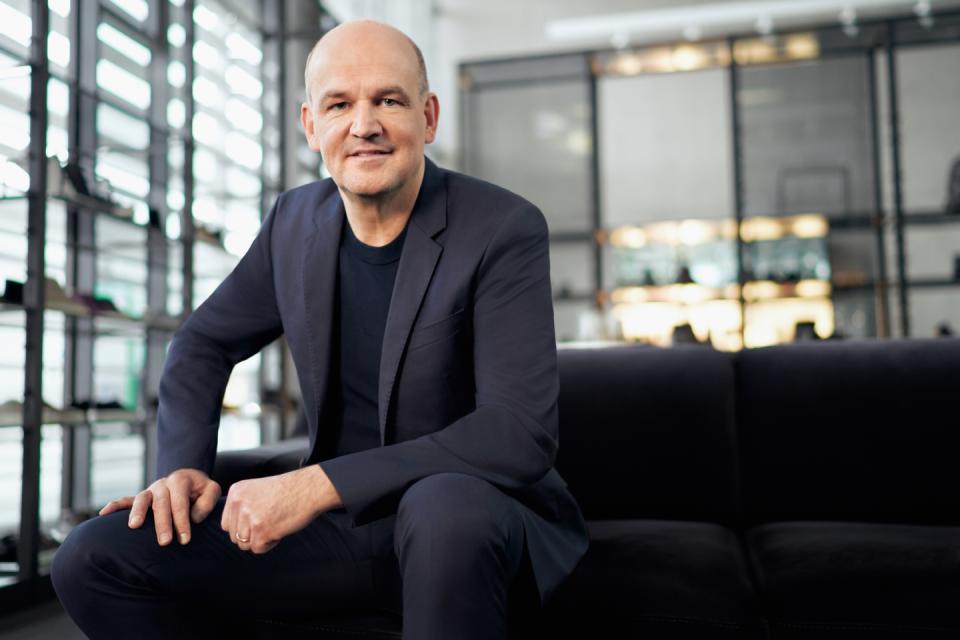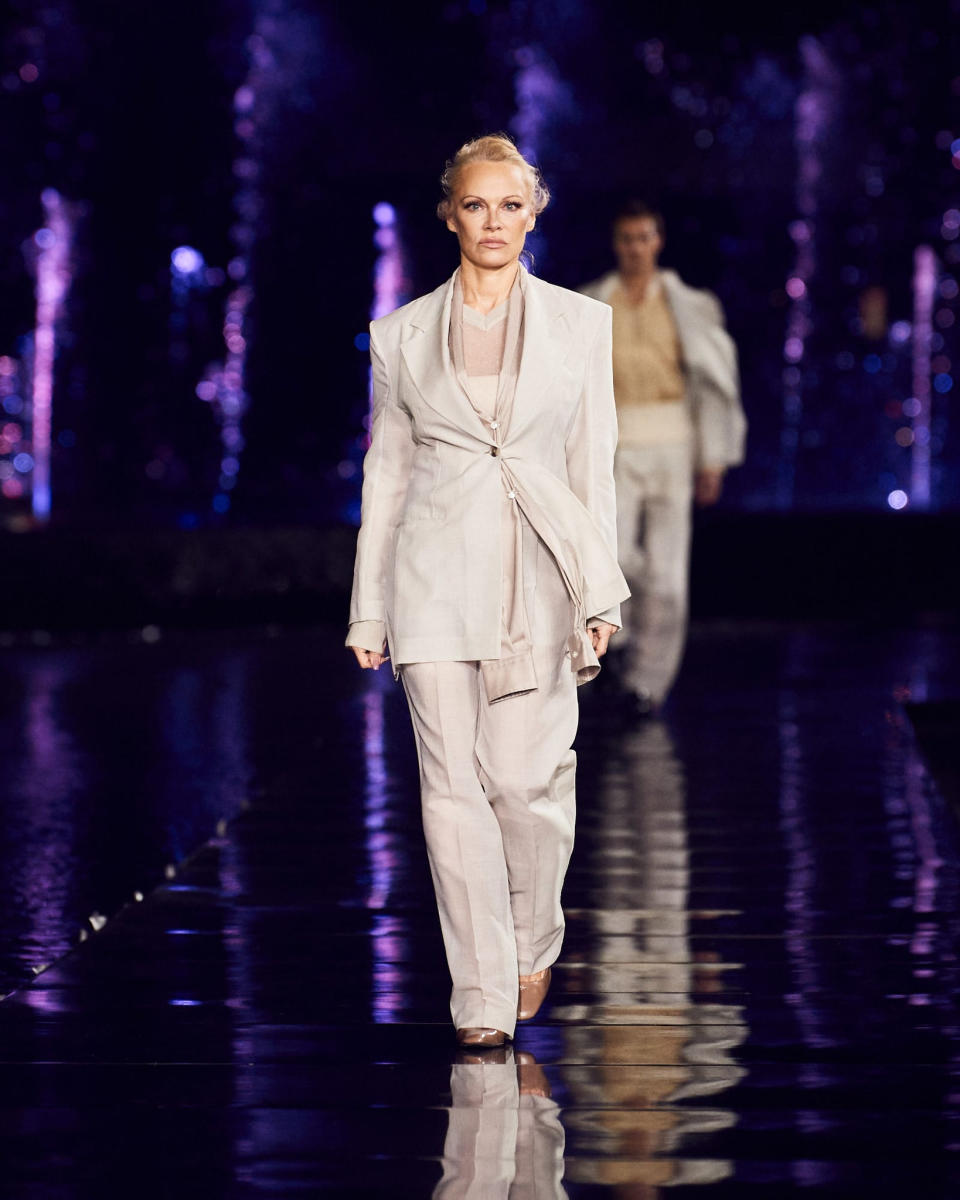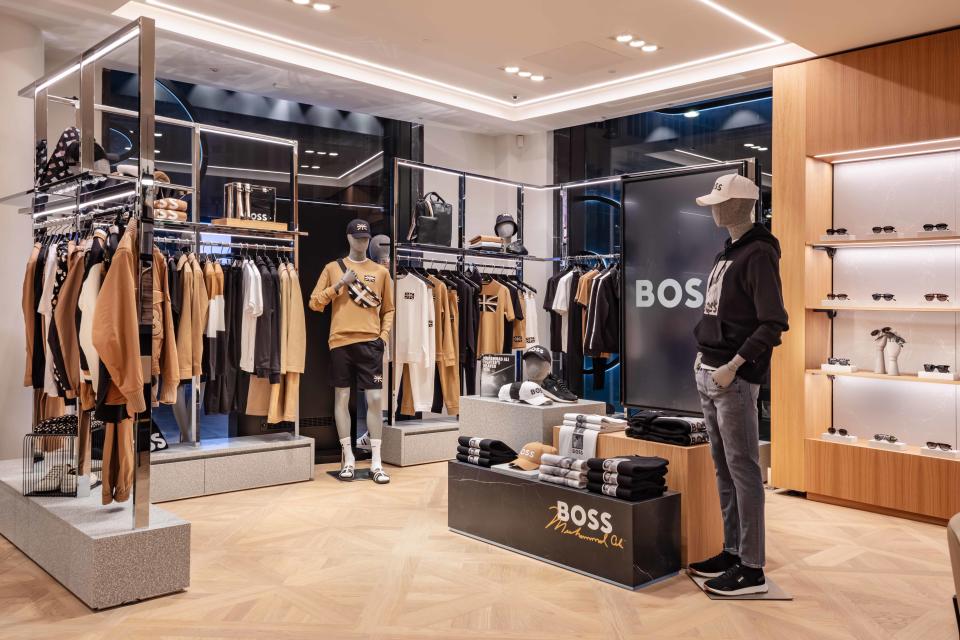Despite Difficult Economics at Home in Europe, Hugo Boss Plans Record-breaking Year

BERLIN — Hugo Boss is predicting a record-breaking year, despite the fact that its biggest market, Europe, slipped into slight recession earlier this year.
European Union authorities now predict growth of just 0.9 percent for the whole year in all the countries that use the euro, as well as mild inflation. Nonetheless Hugo Boss remains optimistic, the company’s chief financial officer Yves Mueller told journalists during a press conference revealing second quarter results.
More from WWD
Top Male Models Through the Years: The Biggest Names on Runways and More
EXCLUSIVE: Boss Signs Formula 1 Driver Fernando Alonso as Brand Ambassador
Sales for the company’s two brands, Boss and Hugo, rose 20 percent in currency-adjusted terms to bring in 1.02 billion euros altogether during the second quarter. This brings the German premium brand’s sales to 1.99 billion euros for the first half of 2023.
“I have to admit that even we were a bit surprised,” Mueller conceded. “But even if we are optimistic, given the numbers that we have announced [Wednesday], the economic conditions do remain difficult and we are accommodating those realities into our forecasts,” he cautioned, noting the low growth rates in Europe.

“But we’re not being cocky,” Mueller continued. “We see our goals for 2023 in reach and we believe this will be the most successful year in our company’s history.”
As a result of the ongoing double-digit increase, Hugo Boss said it now expected to see sales growth of between 12 and 15 percent over the whole year, bringing in between 4.1 billion and 4.2 billion euros. The company’s goal is to make 5 billion euros by 2025.
This is the second time that Hugo Boss has raised guidance this year, having first done so after reporting positive first-quarter results in early May. At the beginning of the year, the company’s outlook had been more modest, with growth expected at between 4 and 6 percent.
The results for the second quarter were broadly in line with market expectations, with analysts predicting sales of 1 billion euros for April, May and June. Sector experts from the likes of JP Morgan, Royal Bank of Canada and Warburg Research also pointed out that the top end of the company’s new guidance was now above the market consensus. Some also expressed concern that Hugo Boss’ margins were still under pressure, it’s inventories still too high and that the overall economic situation in Europe remains insecure.

The German brand did well in Europe over the second quarter, with sales growing 15 percent in currency-adjusted terms to 620 million euros.
Even though Germany, Europe’s largest economy, is only slowly working its way out of a minor recession, Hugo Boss managed a 19 percent increase in sales in its homeland over the second quarter, Mueller said.
The company had previously flagged it would need to raise prices for this fall’s collections by mid-single digits, but no further price rises were currently planned, Mueller said. In fact, Hugo Boss expects costs of production and freight to ease in the second half the year, he added. Additionally, inventories were normalizing after having peaked. Hugo Boss had increased inventories in order to deal with higher demand and shipping delays but no serious discounting would be required, Mueller said.
The Americas have been a focus for the company’s reinvention of itself as a “24/7 lifestyle brand” and there, sales rose 20 percent to 236 million euros.
“Sales in the luxury sector in the U.S. are difficult right now,” Mueller conceded. “But we’re happy with our progress there.”
Hugo Boss believes that with its new approach to modern, more flexible formalwear, something it calls “performance tailoring,” it was hitting the right mark with American consumers.
The Asia Pacific territory saw particularly strong growth of 41 percent for Hugo Boss, bringing in 144 million euros. The company said this was due in part to the ongoing recovery in Greater China, which was in the middle of a COVID-19-related lockdown around the same time last year. In China, Hugo Boss revenues rose 56 percent year-on-year. The company now expects growth in that territory to end up somewhere between 25 and 30 percent for the whole year and Mueller spoke about the potential for further increases.
In terms of the company’s total sales, China doesn’t yet make up its “fair share,” he explained. “Our competitors tend to have about 20 to 30 percent [of their turnover there]. So we see potential to, for example, open larger stores in tier one cities.”
Over the last six months, Hugo Boss has opened six stores in China and by the end of the year will open its first larger premises in China’s fifth biggest city, Guangzhou, Mueller added.
In terms of product lines, Boss menswear — the company’s more formal line and its mainstay — grew 18 percent in currency-adjusted terms to 810 million euros in the second quarter. Sales of Boss womenswear increased 32 percent to 67 million euros.
Hugo Boss had previously made operational and organizational changes in its womenswear production and marketing, and was now seeing the results of that, Mueller noted. The company plans to continue to increase womenswear sales and wants the segment to be worth 500 million euros by 2025.

Meanwhile Hugo, the company’s more youthful, casual line, increased its sales by 21 percent to 148 million euros.
As a result of all of the above, Hugo Boss’ EBIT — earnings before interest and taxes — rose 21 percent to 121 million euros, compared to 100 million euros at the same time last year. The company now expects this to continue to rise, increasing as much as 25 percent, over the whole year.
“We are continuing to go our own way,” Mueller concluded. Investments into marketing will continue, he said, and several campaigns were planned to accompany the winter collection, as were further collaborations. Hugo Boss will also be showing in Milan in September.
Best of WWD

